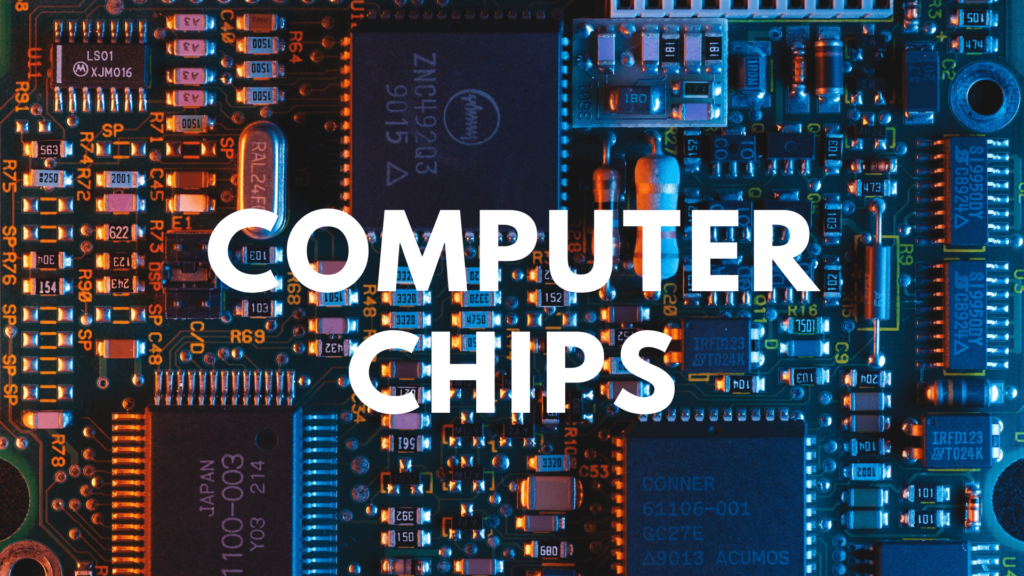At the heart of nearly every digital device we use – from smartphones to supercomputers – lies an intricate piece of engineering: the computer chip. Though no larger than a postage stamp, this piece of silicon houses billions of microscopic components that process vast amounts of information at lightning speed. But what exactly are computer chips? How do they work, and why are they integral to our digital age? This article delves deep into the fascinating world of computer chips, breaking down their complexities for the novice reader.
What is a Computer Chip?
A. Composition and Functionality:
A computer chip, often called a microchip or integrated circuit, is a thin piece of semiconductor material, typically silicon, that contains thousands to billions of tiny components like transistors, capacitors, and resistors. When working together, these components allow for the processing of information in the form of electrical signals.
B. Central Processing Unit (CPU):
Considered the “brain” of a computer, the CPU is a specific type of chip that carries out most of the processing inside a computer. Every action, from opening an application to playing a video, requires the CPU to perform several operations.
C. Memory and Storage Chips:
Apart from the CPU, there are chips designed to store information, both temporarily and long-term. RAM (Random Access Memory) chips provide short-term memory storage, allowing quick access to data that a computer is currently using. On the other hand, solid-state drives (SSDs) use chips for long-term storage, replacing the older hard disk drives.
How Do Computer Chips Work?
A. Role of Transistors:
Transistors are the fundamental components of a chip. Acting as electronic switches, they control the flow of electrical current. Transistors can perform complex calculations by rapidly switching on and off when combined in large numbers.
B. Binary System and Logic Gates:
At the core of a chip’s operation is the binary system, which uses just two values, 0 and 1, to represent all data and instructions. Transistors, when grouped, form logic gates that process these binary values, performing basic operations like addition and multiplication.
C. Communication with Other Components:
Chips do not operate in isolation. Using the bus, they constantly communicate with other computer parts, like memory and input/output devices. This system ensures data flows seamlessly between the chip and other computer components.
Evolution and Future Prospects
A. The Era of Miniaturization:
One of the most significant trends in chip design is miniaturization. Over the decades, engineers have reduced the size of transistors and other components, allowing more details to fit on a single chip. This increase in density has led to more powerful and energy-efficient chips.
B. Challenges Ahead:
As we push the boundaries of miniaturization, we face several challenges. These include heat dissipation, quantum effects that disrupt operations, and manufacturing complexities. Overcoming these hurdles requires innovative approaches in both design and materials.
C. Quantum Computing and Beyond:
The future of computing may not rest solely on silicon-based chips. Researchers are exploring the realms of quantum computing, where quantum bits (qubits) can represent multiple states simultaneously, potentially revolutionizing computing speed and efficiency.
Different Types of Computer Chips
A. Graphics Processing Units (GPUs):
While CPUs handle various tasks, GPUs specialize in rendering images and videos. This specialization makes GPUs ideal for jobs that require parallel processing, like rendering video game graphics or training machine learning models.
B. Field-Programmable Gate Arrays (FPGAs):
Unlike other chips with fixed functions, FPGAs are reconfigurable, allowing developers to modify their structure and functionality after manufacturing. This flexibility makes them ideal for prototyping and custom computing tasks.
C. Application-Specific Integrated Circuits (ASICs):
ASICs are chips designed for a specific purpose, from controlling a washing machine to mining cryptocurrencies. They are highly optimized for their particular task, offering efficiency benefits but needing more versatility.
Chip Manufacturing and Innovations
A. The Lithography Process:
Chip manufacturing is a complex process that involves multiple steps. One essential process is lithography, where intricate circuit patterns are printed onto the silicon wafer using ultraviolet light.
B. Silicon Alternatives:
While silicon remains the dominant material for chip manufacturing, researchers are exploring alternatives like gallium nitride and graphene. These materials offer potential benefits in speed and efficiency.
C. 3D Chip Stacking:
To overcome space limitations on the chip’s surface, manufacturers are exploring 3D stacking techniques. Stacking chip layers vertically can increase component density without expanding the chip’s footprint.
Environmental Impact and Sustainability
A. Energy Consumption:
As chips become more powerful, their energy consumption can rise. This increase has implications for device battery life and more significant environmental concerns, especially in data centers.
B. E-Waste Challenges:
Outdated or broken electronics often end up as e-waste. With rapid tech advancements, the volume of e-waste is growing, prompting concerns about its environmental impact and the need for effective recycling methods.
C. Sustainable Manufacturing:
Recognizing these challenges, many chip manufacturers are adopting sustainable practices, from reducing water usage in their facilities to developing chips that require less energy. The industry is evolving towards a more eco-friendly direction, emphasizing performance and sustainability.
The realm of computer chips, from their intricate designs to their powerful functionalities, remains a testament to human ingenuity and the rapid pace of technological evolution. These tiny silicon marvels, whether generalized CPUs or specialized ASICs, drive the very core of our digital era. As manufacturers push the boundaries of what’s possible, innovations in materials, design techniques, and sustainability practices are emerging to address the challenges of the modern age. From the profound impacts on environmental sustainability to the pivotal role in shaping the future of computing, computer chips are the backbone of our current technological landscape and the beacon leading us into the future.
